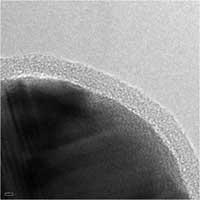
SERS (Surface-enhanced Raman scattering) is a common technique used for spotting trace materials and molecules. Although this process requires a clean sample, College of Engineering researchers are claiming this new "Smartdust" actually enables SERS on any surface. SERS is usually only used by textured surfaces, specifically metals, such as gold and is very limited to where it could be applied. This new “Smartdust” makes this limitation a thing of the past. Developed by Zhong Lin Wang(School of Materials Science and Engineering) and Zhongqun Tian (Xiamen University) and, Smartdust can be applied onto any surface, making SERS possible, and in high quality.
A typical application of "Smartdust" is scattering a hundred of the sensors around a building or around a hospital to monitor temperature or humidity, track patient movements, or inform of disasters, such as earthquakes. In the military, they can perform as a remote sensor chip to track enemy movements, detect poisonous gas or radioactivity.
The dust is the basis of SHINERS (shell-isolated nanoparticle-enhanced Raman spectroscopy), a new technique developed from the study. SHINERS is well suited for inspection of anything from foods to explosives.“We are optimistic that, along with the rapid development of portable Raman instruments, SHINERS will be a simple, fast, nondestructive and portable characterization tool,” says Wang.
